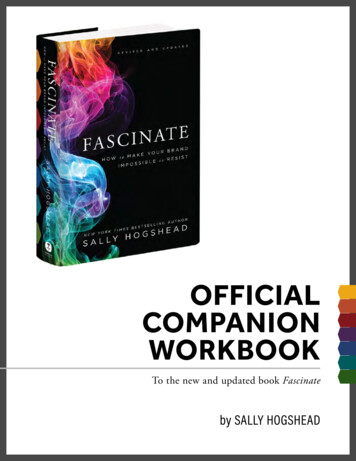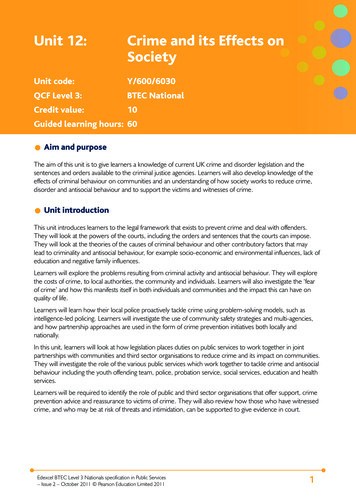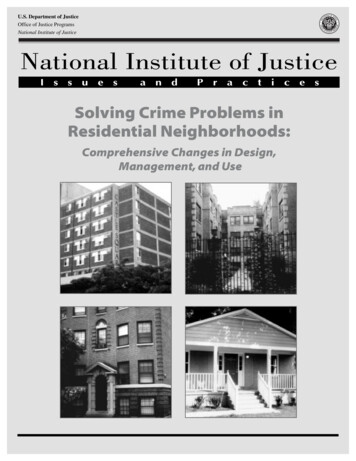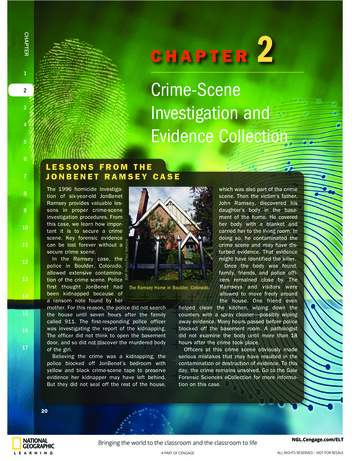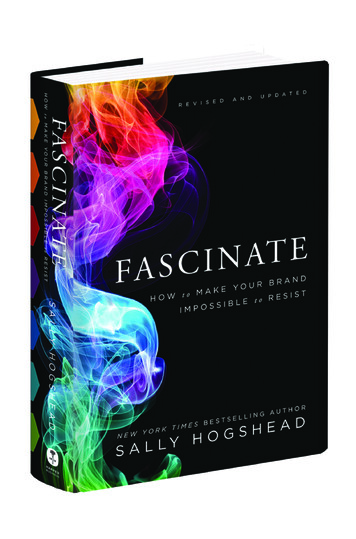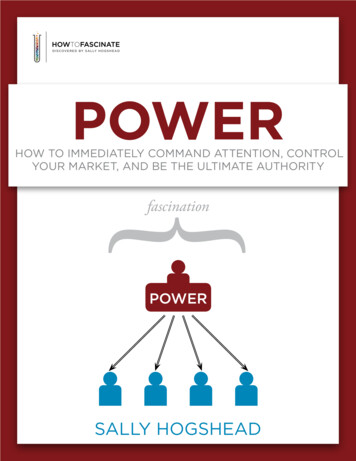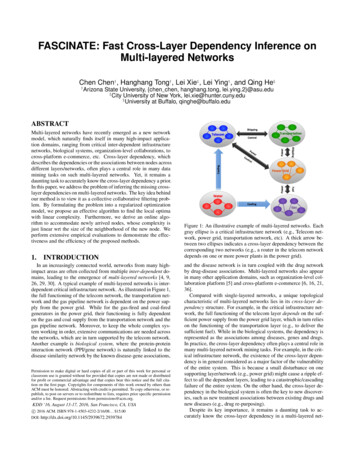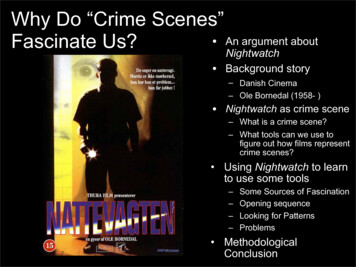
Transcription
Why Do “Crime Scenes” An argument aboutFascinate Us?Nightwatch Background story– Danish Cinema– Ole Bornedal (1958- ) Nightwatch as crime scene– What is a crime scene?– What tools can we use tofigure out how films representcrime scenes? Using Nightwatch to learnto use some tools––––Some Sources of FascinationOpening sequenceLooking for PatternsProblems MethodologicalConclusion
Danish CinemaSince the 1980sLars von Trier (1956- )2
Elements of Danish CinemaSince the 1980s Art– Anti-narrative cinema– National expression Success– Pelle the Conquerer– Babette’s Feast– Lars von Trier Money– Danish Film Institute (DFI)– Popular Successes Dogma ’95 Cinema of limitations
The Idiots (von Trier, 1998)4
Ole Bornedal (1959-) Comparative outsider Writer and Director of Nattevagten– 1994– 1998 Bornedal’s style merges classicalHollywood narrative and elementsof Danish art-film tradition– Plot-driven films– Director’s intention mayexplain narrative links, whenplot cannot Bornedal’s films– Charlot and Charlotte (1996)– Dybt vand (1999)– Dina (2001) Combination of relativepsychological depth and tightnarrative helps us see how crimescenes are constructed
What is a Crime Scene? Representation of an “act of violence” “Object, manner, and means” (Aristotle) Act of violence is infinitely malleable throughalteration of the quadrangleRepresentation ofact of violenceExposed Light(Medium)Bornedal & )
What Tools Can We Use? What is the “manner” in which a film represents theact of violence? By studying a film’s formal codes, we can dissect itsmanner to better understand its depiction of crimescenes Formal codes– Cinematography (type of shot, angle, movement, lens,composition)– Lighting– Mise-en-scene– Transitions (editing)– Sound
Nightwatch OpeningSequence
The opening shots of the film introduce the motif of unmotivated camera movementthrough hallways. (The camera’s perspective is not attributed to any character.)
After initial introduction to apartment, close-ups begin to single outdetails, which will reappear later in the film. The phone will become akey prop when Martin is suspected of murder.
Close-ups at the dinner table provide a quick and intimateintroduction to the main characters in the film -- Martin and Jens
Kalinka and Lotta are shot in medium-long (plain americain) andmedium shots, indicating they will figure less prominently in the filmthan Martin and Jens, who get the close-ups
Close-up on the television featuring an interviewwith Inspector Peter Wörmer, indicating his futuresignificance to the story
The close up on spilled wine leads to a scream -- get readyfor more frightening reactions
The Manner of the CrimeScene The film “trains us” to view it byintroducing from the beginning a clusterof techniques, or, codes These codes will cue our expectationsthroughout the film -- invite hypotheses Modulations alter the representation ofthe crime scene, and we respond invarious ways Multiple functions of these codes
Multiple Function of CrimeScenes Opening sequence of“worldmaking” also introduceskey narrative elements Messy apartment’s objectsintroduce major themesLaw book on the desk Jens with pastor’s clerics on –––––––––Martin’s jobLotta’s jobKalinka’s studiesCharacters’ attitudesYouth and responsibilityClass positionMurder of prostitutesApartment and friendsRites of passage and celebrations
Patterns in the Scene Apartment Hospital––– Hallways at hospitalRooms at homeNightwatchman’s roomCamera movement– Long shots in hallways Dangerous rooms Steadicam in hospital rooms– Static cameras and overhead shots in saferooms Bedroom Nightwatchman’s officeTypes of Shot– Long shots down hallways Doors Windows– Medium and close ups at homeLighting– Fluorescent hallways– Softer light in rooms– Natural light and candles at homeWhat is down the hall, behind the door?What are those concealed objects?
Close-ups, static cameras, and warm lighting make the bedroomsafe and warm, situating it in contrast to the long shots that makethe hallways stark, fluorescent and frightening
Hallways and Moving Cameras-- With Steadicam Inside
Hypothesis and Fascination What is in that tub?One way of creating fascination isto use codes that solicithypotheses by viewers aboutwhat must happen nextThree codes that prompthypothesis formation–Effects in search of causes Steadicam Ambiguous motivation–Crosscutting to inform viewer Wine bottle Murder of Joyce What must happen next?– Identification with characters Fascinating silence - but what about the cords?On-screen presencePoint of viewCharacterization and motivationProblems of identification– Gender– Misogyny
Can Overuse of A Code UndermineIts Communicative Function?
Notice the the contrasts created by shot length, camera movement,composition, and lighting that work to distinguish the hallways andthe nightwatchman’s room
A Methodological Conclusion Examine key details--like the opening sequenceMap key sequences Identify issues and patterns– What codes are used?– How do they solicit hypotheses? Venture some hypothesesLook for problems and points of criticism
Fascinate Us? An argument about Nightwatch Background story – Danish Cinema – Ole Bornedal (1958- ) Nightwatch as crime scene – What is a crime scene? – What tools can we use to figure out how films represent crime scenes? Using Nightwatch to learn to use so
